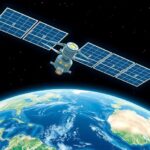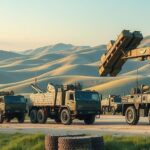China’s Expanding Counterspace Capabilities: Insights from Recent Report
A recent report by the Secure World Foundation highlights China’s rapid advancements in counterspace capabilities, including anti-satellite systems and electronic warfare technologies. The findings reveal a broad range of developments aimed at securing military power in orbit and emphasize the strategic ambiguity surrounding these capabilities. The report indicates China is integrating these technologies into its military operations while raising concerns about their potential use in future conflicts.
According to a recent report by the Secure World Foundation, China is making significant advancements in counterspace capabilities as part of its military strategy in space. The report, titled Global Counterspace Capabilities 2025, released on April 3, offers a detailed analysis of various nations’ counterspace developments, emphasizing the technologies and strategies that can threaten space assets.
The report highlights China’s commitment to developing a range of offensive counterspace capabilities, including direct-ascent anti-satellite (ASAT) systems, co-orbital ASAT operations, rendezvous and proximity operations (RPO), directed energy weapons, and electronic warfare (EW). It notes, “Over the last decade, China has engaged in multiple tests of technologies and capabilities that either are offensive counterspace weapons or could be used as such.”
Significantly, the report details new activities over the previous year, including the deployment of an experimental satellite in geostationary orbit (GEO) to conduct space-based jamming tests. The findings suggest that the People’s Liberation Army is seeking to improve jamming techniques as existing ones reportedly fail against specific GEO communications satellites.
The report emphasizes China’s significant focus on anti-satellite capabilities, indicating that the country likely possesses at least one, and potentially up to three, direct-ascent ASAT systems. While the low Earth orbit (LEO) DA-ASAT capabilities are expected to be operational, those targeting medium Earth orbit (MEO) or GEO are still reportedly in development.
In addition, Chinese satellites like Shiyan-24C, TJS-3, TJS-10, and Shijian-17 have engaged in proximity operations, which may serve intelligence and counterspace purposes, although there is no public evidence of destructive applications.
China is enhancing its space situational awareness through an extensive network of ground-based optical telescopes and radars, as well as improving on-orbit space situational awareness assets. This will allow for better detection, tracking, and characterization of space objects.
Moreover, China is believed to have formidable electronic warfare capabilities, particularly aimed at jamming Global Navigation Satellite Systems (GNSS) and satellite communications, responding to the current dominance of commercial satellite networks like SpaceX’s Starlink. Research is also being conducted into directed energy weapons (DEW) for counterspace applications.
Budgetary support for China’s counterspace endeavors remains opaque. The report states, “Little reliable information has been provided on the budget for China’s entire space program, let alone its budget for counterspace technologies.” Despite spending less on space than the United States, China has still managed to develop a substantial counterspace program.
The report raises questions about how China might position its counterspace capabilities in future conflicts, suggesting that these advancements could serve as a pathway to deterrence against potential US aggressions. The recent reorganization from the Strategic Support Force to the Information Support Force emphasizes a focus on information warfare as part of China’s strategic restructuring.
The findings from the Secure World Foundation’s report indicate that China is significantly expanding its counterspace capabilities as a core component of its military strategy. The development of offensive counterspace technologies, including anti-satellite systems, electronic warfare, and directed energy weapons, reflects China’s ambition to assert dominance in space. Furthermore, the lack of transparency regarding budget allocations for these activities complicates assessments of their intentions and operational use. Overall, China’s military modernization in space presents new challenges and uncertainties for global security.
Original Source: spacenews.com








Post Comment